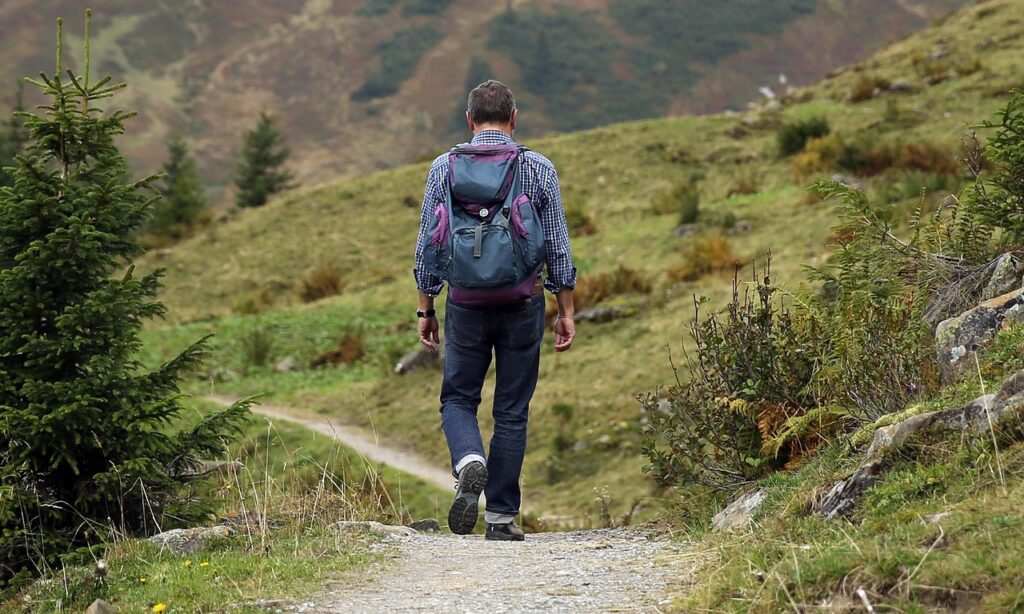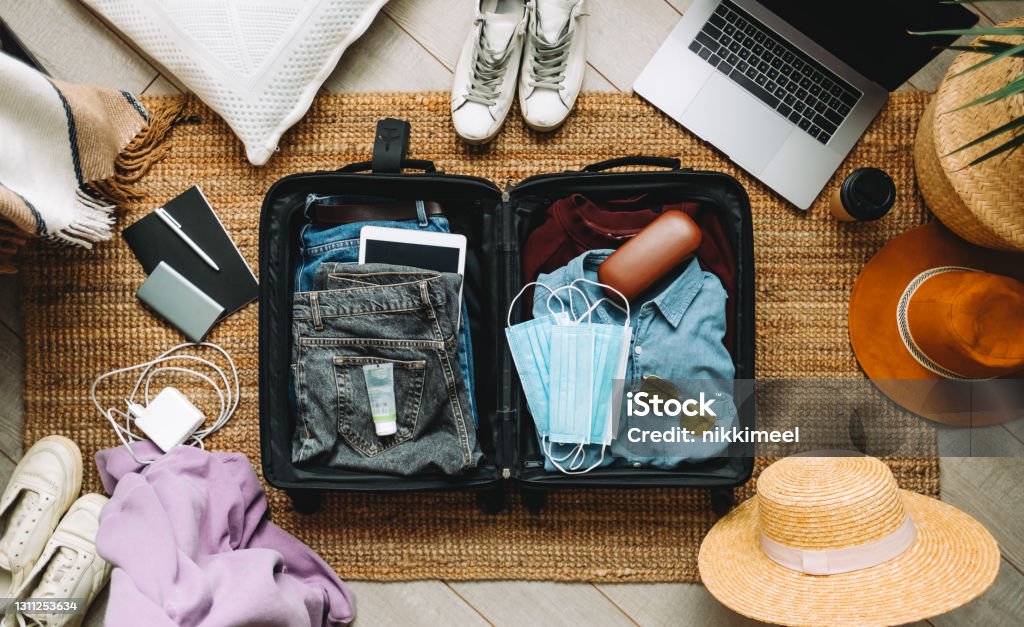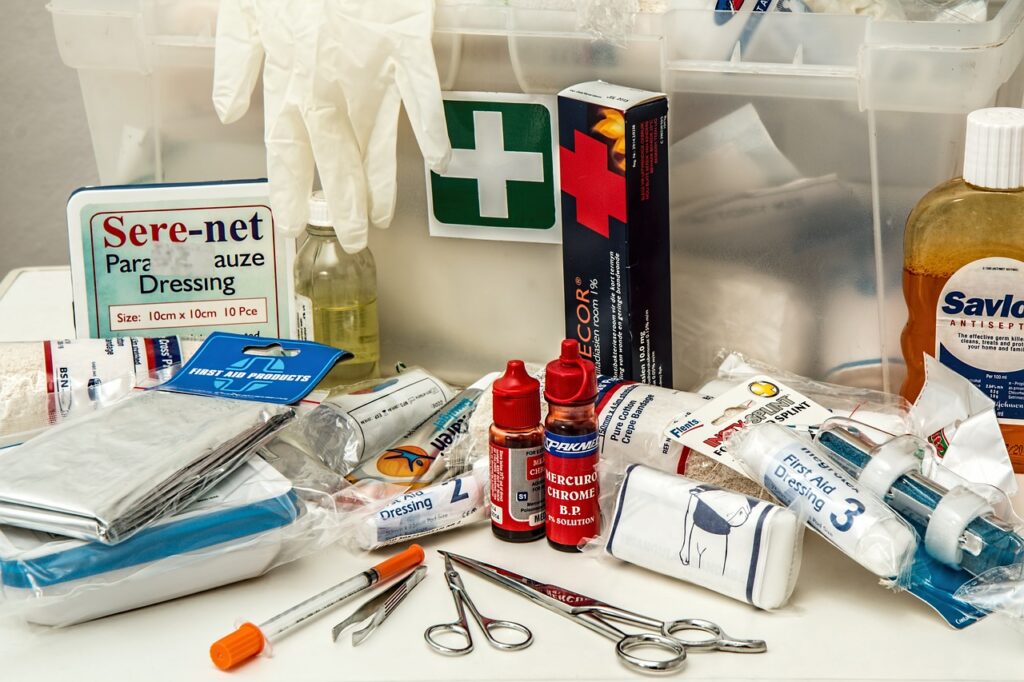We all have dreamt of relocating to the mountains one day. Well, the refreshing breezy feeling on your face and the experience of climbing the peaks itself is something that keeps you young and always in awe.
The scenery is mesmerizing, making sure you don’t take your eyes away from it.
But what’s the catch? Beautiful things have their dangers.
But should you refrain from visiting? Never.
A few precautions. Know what to pack and how to stay safe. If not sure, let us help you through some tips in the article.

What You Need for a Safe and Happy Trip
Be ready with the right stuff, so you can enjoy the mountains without any stress.
Clothes:

- Warm Layers – Thermal base layers, fleece, and a down jacket for insulation.
- Waterproof Gear – Waterproof jacket and pants to stay dry in rain or snow.
- Cold-Weather Accessories – Insulated hat and gloves to protect extremities.
- Footwear – Sturdy hiking boots with ankle support; pack extra socks.
Equipment:

- Rucksack: Sturdy, suitably sized rucksack for easy gear transportation.
- Shelter: When camping, a lightweight tent can be used for overnight stays.
- Sleeping Equipment: A cold-rated sleeping bag and a sleeping mat for a good night’s sleep.
- Lighting: For visibility, a dependable headlamp and flashlight with extra batteries.
- A compass, a map, and a GPS gadget are navigational aids for safe travel.
- Multi-tool: An adaptable tool or blade for a range of uses, including emergencies.
- Trekking Poles provide extra support and stability, particularly on steep terrain.
- Equipment for Climbing: Carabiners, ropes, and harnesses for tricky ascents.
- First Aid Kit: Packed with everything needed to treat wounds.
Food and Drink:

- High-energy Snacks: Trail mix, energy bars, and the like, to help you stay fueled uphill.
- Hydration Systems: To remain hydrated, use hydration packs or water bottles.
- Water filters help make natural water clean and safe for drinking.
Safety items:

- Sun protection. Use sunscreen and lip balm with an SPF rating to avoid being sunburned.
- Sunglasses with UV protection are recommended for eye safety.
- Emergency Shelter. Always carry a compact, lightweight space blanket or bivvy for unexpected overnight stays or emergencies.
- Whistle for calling for assistance in an emergency.
- You can carry a satellite messenger or a personal locator beacon (PLB) to send help signals if there’s an emergency.
- Printed maps and a smartphone or GPS gadget are useful navigational aids.
Additional Needs:

- A camera or binoculars to record picturesque vistas.
- Get any permissions needed to go camping or hiking.
- Always have enough cash on hand for shopping and emergencies.
- To ensure that all rubbish is removed and no trace is left.
- Extra food reserved for emergencies or unforeseen delays is known as emergency rationing.
- Waterproof matches or a lighter work well as fire starters.
- Repair Kits, such as Equipment repair tools and supplies for on-the-job repairs.
- Personal items like personal hygiene products, prescriptions, and toiletries.
Being Ready for Emergencies:

- Emergency Shelter – Carry a lightweight bivvy or emergency tent for instant weather protection.
- Emergency Food – Pack ready-to-eat, high-calorie meals with a long shelf life.
- Communication Tools – Bring a mobile phone, signal flares, and a two-way radio.
- Fire Starter – Carry waterproof matches, a lighter, or a fire-starting tool to help you make a fire easily.
- Emergency Blanket: Carry a thermal space blanket to retain body heat in extremely cold conditions.
- Navigation Backup – Carry paper maps and a compass in case GPS fails.
- First Aid Supplies – Include trauma pads, a tourniquet, and a CPR mask.
- Multi-tool – A compact tool with pliers, knife, scissors, and screwdriver.
- Emergency Cash – Store small amounts in a waterproof container.
- Contact List – Keep emergency numbers in a sealed, waterproof bag.
- Emergency Plan – Set meeting points and procedures with your group.
- Signaling Devices – Carry a mirror, whistle, and bright flag or cloth.
- Hygiene Kit – Include wet wipes, hand sanitizer, and biodegradable soap.
- Repair Kit – Pack some duct tape, zip ties, and extra buckles in case something breaks.
- Important Documents – Keep ID, health records, and contacts waterproofed.
- Rain Protection – Pack an emergency poncho or compact rain jacket.
- Extra Batteries – For all devices: GPS, lights, and radios.
- Energy Boosters – Bring energy gels, electrolyte tabs, and snack bars.
- Sanitation Tools – Bring a small shovel (trowel) to bury your waste properly.
- Spare Clothing – Keep dry clothes in a sealed, waterproof bag.
During your climbing journey, having these emergency supplies on hand might be crucial to guaranteeing your safety and well-being in difficult and unanticipated situations.
Conclusion
Mountain trips can be fun and full of good memories, but only if you are well-prepared.
We are not saying to be overprepared because then you will miss all the fun, but still be ready for anything.
Carrying the right clothes, food, tools, and safety items can make a big difference. It helps you stay warm, safe, and happy, even if the weather changes or something goes wrong.
Always plan before you go and take care of nature by cleaning up after yourself. With a little care and the right things, your mountain trip can be safe, simple, and full of joy.

